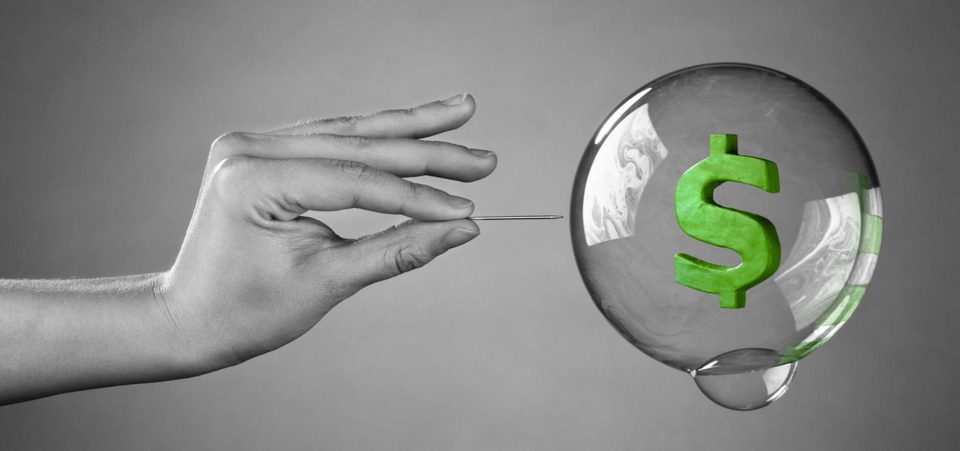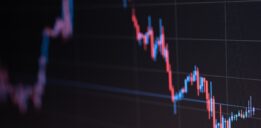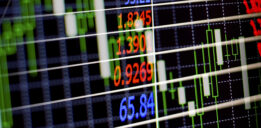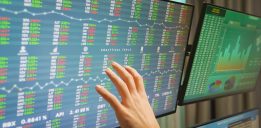Second Tech Bubble Stretching Thin
Are we in a tech bubble? It’s fair to say that most analysts think that tech stocks are in a bubble. The question is, how big is that bubble? The tech bubble has been stretching thin for a while now. Many thought it would burst in 2016. It didn’t.
Is 2017 the year the tech bubble bursts? Will it be worse than the 2000 dot-com disaster? If irrational exuberance, sky-high valuations, and a complete disregard of valuation are key ingredients, then the idea of “Tech Bubble 2.0” bursting isn’t so far-fetched.
Fears of the tech bubble are in high gear, and memories of the 2000 dotcom disaster are no longer just a distant memory. The NASDAQ composite index is in record territory, closing in on 6,000, which is well above the 5,000 level last seen during the peak of the 2000 tech bubble.
In February 2017, the S&P 500 Technology Sector Index posted a record 15-day winning streak—its longest ever. To put that into perspective, over the last 120+ years, the Dow Jones Industrial Average (DJIA) has never had a 15-day winning streak.
Snap Inc is Just Another Tech Unicorn, Nothing to See Here
In an overvalued stock market, tech stocks continue to attract all the attention. In early March, Snap Inc (NYSE:SNAP), the parent company of Snapchat, soared in the early days of its initial public offering (IPO). On the first day of trading publicly, the stock closed at $24.48, which is a 44% increase from the IPO price of $17.00. On the second day, it soared even higher, almost 20%.
After just a couple of days of the Snapchat IPO, the company had a market cap of around $31.3 billion. This, for a company that generated $404.5 million in revenue in 2016 and a net loss of more than half a billion dollars. (Source: “Form S-1,” U.S. Securities and Exchange Commission, February 2, 2017.)
Surely it will get better for Snap? Not necessarily. The company notes in its U.S. Securities and Exchange Commission (SEC) filing that, since commencing operations in 2011, it has never made money and may never achieve or maintain profitability. Can Snap keep it up, or will it disappear as quickly as one of the photos that users post on its site?
These kinds of companies are called “unicorns.” That is, startup companies with a market cap of over $1.0 billion. The mythical creature was chosen to represent the statistical rarity of such a company succeeding. In Canada, tech unicorns are called “narwhals,” except narwhals are real.
One would hope that a tech unicorn would indeed be rare. It takes a lot, or should take a lot, to justify a $1.0-billion valuation. Sadly, unicorn tech stocks are as common as amoeba.
Some popular tech unicorns (not all are public) include: Uber Technologies Inc., Xiaomi, Airbnb, Inc., Lu.com, WeWork, FlipKart, SpaceX, DropBox, Pinterest, Spotify AB, Cloudera, Inc., Palantir Technologies, Zhihu, 51Xinyongka, and Eventbrite.
The list goes on. Some you’ll have heard of; others, maybe not. And, to be fair, some have better chances of succeeding than others. Regardless, they’re all tech companies and currently have valuations of $1.0 billion or more.
For now.
Investors love the growth potential in tech stocks, but investors also get impatient. The Twitter Inc (NYSE:TWTR) share price has lost roughly 80% of its value since the early days of 2014. Similarly, the share price of Fitbit Inc (NYSE:FIT) only has also around 80% of its value since IPOing in mid-2015.
Still, tech stocks are at all-time highs, lifted in part by the same artificially low interest rates that have sent the broader markets into record territory. But those frothy heights cannot be sustained indefinitely. And we know how it will end. We saw it before.
2000 Dotcom Disaster
In the run-up to the new millennium, people were worried about one thing, and one thing only: Y2K. Despite all the end-of-the-world hype, nothing happened. At the other end of the spectrum, there was the stock market. Tech stocks were soaring, valuations be damned, and the good times were going to keep on rolling. They didn’t. The dotcom bubble burst in June 2000.
The tech-heavy NASDAQ plunged from a high of 5,132 in March 2000 to just 1,470 four months later. From peak to trough, the NASDAQ lost roughly 80% of its value.
In the run-up to the dotcom crash, investors poured money into companies with no proven business strategy and spent like crazy to grow the business and take it public.
When these companies went public, retail investors—afraid to miss out on the next big thing— dumped billions of dollars into tech stocks, sending the newly minted IPOs soaring in the early days.
In 1999, there were 457 IPOs, most of them being Internet and technology stocks. Of those 457 stocks, 117 doubled in price on the first day of trading. Each tech IPO created new millionaires on day one. (Source: O’Malley, Chris, “Bonds Without Borders: A History of the Eurobond Market,” West Sussex, U.K.: John Wiley & Sons, 2014.)
But then something happened: investors woke up, rubbed the sleep from their eyes, and realized that a tech company with a billion-dollar market cap and no revenue, earnings, or future is essentially worthless.
Who can forget the glittery hype that attracted investors to promising dotcom startups like govWorks, eXcite (which turned down an offer to buy Google for $750,000.00), Boo.com, Webvan.com, Kozmo.com, GeoCities, Flooz.com, and Pets.com (home to the world’s best commercials)?
Fear set in and investors ran for the exits. Tech companies that were once worth billions of dollars went to zero. Beaten-down tech stocks, unable to find enough new capital to keep their firms afloat after the free-wheeling dotcom spending spree, went bust.
Like all sell-offs, it also took some great tech stocks down with it, meaning it put them in a great range. Cisco Systems, Inc. (NASDAQ:CSCO) lost 86% of its market cap and the Amazon.com, Inc. (NASDAQ:AMZN) share price plunged from $107.00 to just under $7.00 per share.
The dotcom disaster was made worse by a recession that swept the European Union (EU) in 2000 and 2001 and the U.S. in 2002 and 2003. In 2001, there were 76 IPOs. Unlike a couple years before, not a single one of them doubled on the first day of trading.
The broader stock market has recovered since then, and is now in record territory. Even the once-high-flying NASDAQ has surpassed its glory days of 2000. Does that mean the NASDAQ and tech stocks are in an even bigger bubble that is set to burst?
Current Tech Bubble is Much Worse than 2000
And investors thought Donald Trump would be bad for tech stocks! Depending on who you ask, the current tech bubble may, or may not be worse than the 2000 tech bubble. Here’s what we know: tech stocks are on fire.
In early 2017, the S&P 500 tech sector index posted a record 15-day winning streak, its longest ever. The tech-friendly NASDAQ reported seven consecutive record highs in February 2017, the longest streak since December 1999.
Two popular exchange-traded funds (ETFs) that track tech stocks are also soaring. Technology SPDR (ETF) (NYSEARCA:XLK), which is comprised of large-cap tech stocks, is just shy of its March 2000 highs, while the PowerShares S&P SmallCap Info Tech ETF (NASDAQ:PSCT) is in record territory.
This follows a broader surge on Wall Street, where the DJIA, S&P 500, and NASDAQ all hit record highs for five consecutive days, the first time that it happened in 25 years.
Those who believe that the current tech bubble is not as bad as the 2000 dotcom tech bubble point to rising IPO standards, aversion to IPOs, lower barriers to entry, less industry diversity, and less debt as reasons not to fear the upcoming tech bubble.
But there are more compelling reasons to believe that the current tech bubble is, in fact, much worse than the 2000 dot-com disaster.
- Stocks in general are significantly overvalued. The S&P 500 is, according to the cyclically adjusted price-to-earnings (CAPE) ratio, overvalued by 85.6%. The CAPE ratio is currently at 29.7; the long-term average is 16. It’s only been higher twice: in 1929 (30) and 1999 (45).
- The Warren Buffett indicator shows that stocks are overvalued by 31.5%. The market cap-to-GDP ratio has only been higher once since 1950: in 1999, stocks were overvalued by 53.6%.
- The Wilshire 5000-to-GDP ratio is at an all-time high of 140.5; it was only at 117.9 before the first tech bubble burst in 2000.
(Sources: “Online Data Robert Shiller,” Yale University, last accessed March 3, 2017; “Wilshire 5000 Total Market Full Cap Index/Gross Domestic Product,” Federal Reserve Bank of St. Louis, last accessed March 3, 2017.)
Current valuations are not as extreme as they were in 1999, but today’s economy is also not as strong as it was then. In fact, today’s price-to-earnings (P/E) ratio might be even more overvalued than it was in 1999.
|
Economic Metrics |
1995–1999 |
2012–2016 |
|
GDP Growth |
4.08% | 1.09% |
|
GDP Trend |
2.3% | 1.8% |
| Federal Debt ($Trillions) | $5.36 |
$17.47 |
|
Federal Debt/GDP |
60.23% |
101.4% |
|
10-Year Treasury Rate |
6.05% |
2.13% |
|
Federal Funds |
5.38% |
0.18% |
|
S&P 500 3-Year Earnings Growth |
7.53% |
-3.84% |
|
S&P 500 5-Year Earnings Growth |
9.50% |
-0.49% |
| S&P 500 10-Year Earnings Growth | 7.74% |
0.89% |
(Source: “Stop! This is NOT like the dot-com bubble… it’s much worse,” MarketWatch, March 4, 2017.)
So, while stock market valuations were higher in 1999 than they are in 2017, the economic factors in 1999 are tame by comparison. One similarity, though, is that the U.S. is headed toward a recession in 2017 just like it was in 1999.
How can that be when stocks are at record levels, jobs data is encouraging, and the Fed is set to raise its key lending rate?
Because the U.S. economy remains fragile and the global economy is shaky. The U.S. economy advanced just 1.6% in 2016, 2.6% in 2015, 2.4% in 2014, and 1.7% in 2013. The official unemployment rate is under five percent, but the underemployment rate is closer to 10%.
Most of the jobs that have been created since the so-called recovery have been low-paying, part-time jobs. Wage growth is non-existent, and household debt levels are approaching pre-recession levels. Moreover, half of Americans would have to borrow money to cover a $400.00 emergency expense. Corporate and personal bankruptcies are up and more and more businesses are laying off people.
Some believe that a recession is even more likely under President Trump. In his first address to Congress, Trump championed his “America First” platform, saying his pro-growth strategy is governed by two principles: Buy American and Hire American. In a nutshell, it’s going to get a lot more expensive for countries to do business with the United States.
How much more expensive? Trump has said he would consider a 35% tariff on U.S companies that move jobs overseas; a 45% tariff on imports from China; and a five percent tariff on all goods imported into the United States. (Source: “Trump is reportedly considering a 5% tariff on all imports, Business Insider,” December 22, 2016.)
On the campaign trail, Trump said his economic policies would generate annual gross domestic product (GDP) growth of four percent. Will these efforts get the U.S. economy to four percent GDP, or will they backfire?
Remember too that Trump is starting from the ground up. When Trump took over the Oval Office, GDP was 1.6%. Since the Great Recession, U.S. GDP has averaged just 2.3%. Barack Obama also handed Trump a national debt of almost $20.0 trillion and a deficit broaching $600.0 billion.
Against the backdrop of weak economic growth, Americans have less to spend on non-essentials. Further, Trump’s trade policies could undermine corporate earnings. Best-case scenario, corporate America is facing a period of economic stagnation; worst-case scenario, tech stocks and the broader markets could tumble.
While some big tech stocks continue to generate solid revenue and earnings, the same cannot be said for all tech stocks. Not unlike 1999, investors will wake up and discover there is no reason to pay huge sums of money to purchase tech stocks with sky-high valuations that could be facing mediocre earnings growth for years to come.
We all know what happens next.






